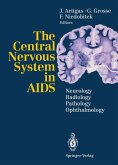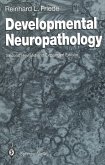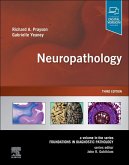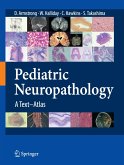This volume acquaints the non-neuropathologist with the advantages of clinical-radiologic-pathologic correlation in neuropathology specimens, particularly in the intra-operative consultation. As a good cytology preparation can add to, or even supply in isolation, a diagnosis, this volume covers the enormous and sometimes insurmountable artifacts involved with freezing tissue, especially central nervous system tissue. The text presents how to perform, and stain the cytologic preparations, and how to interpret them. The advantages and disadvantages of both frozen sections and cytologic preparations of various kinds are discussed. The presentation and format is very visual with diagrams, tables, with many figures including pearls and pitfalls and therefore easy reading.
An introductory chapter presents the pros and cons of cytology, the advantages and disadvantages of frozen sections, and the artifacts in both. Also included is an argument for knowing what the scans reveal, and the impact of relevant patient history. The volume uses a case-based approach to show correlation between scan, history, frozen section and cytologic preparations.
With the combination of extensive correlation of scans, cytology, and frozen section with differential diagnosis, and analysis of the information crucial to the neurosurgeon in a case-based approach and with a special chapter written by a neuroradiologist, this volume is unique in presentation and utility and will be of great value to the trainee in pathology (residents/fellows), and practicing pathologists who include neuropathology in their practice, but do not have formal fellowship training in neuropathology.
Hinweis: Dieser Artikel kann nur an eine deutsche Lieferadresse ausgeliefert werden.
An introductory chapter presents the pros and cons of cytology, the advantages and disadvantages of frozen sections, and the artifacts in both. Also included is an argument for knowing what the scans reveal, and the impact of relevant patient history. The volume uses a case-based approach to show correlation between scan, history, frozen section and cytologic preparations.
With the combination of extensive correlation of scans, cytology, and frozen section with differential diagnosis, and analysis of the information crucial to the neurosurgeon in a case-based approach and with a special chapter written by a neuroradiologist, this volume is unique in presentation and utility and will be of great value to the trainee in pathology (residents/fellows), and practicing pathologists who include neuropathology in their practice, but do not have formal fellowship training in neuropathology.
Hinweis: Dieser Artikel kann nur an eine deutsche Lieferadresse ausgeliefert werden.
From the reviews:
"This book takes a case-based approach to the interpretation of frozen sections and smears for the non-neuropathologist. ... this book is intended for non-neuropathologists. ... will definitely keep it as a reference on my shelf of important books. The location-based development of differential diagnoses and the inclusion of neuroimaging characteristics make this the perfect book for the non-neuropathology fellowship-trained pathologist. I highly recommend it as a worthy addition to the books available in the frozen section area of any practice." (Maura F. O'Neil, Doody's Review Service, April, 2012)
"This book takes a case-based approach to the interpretation of frozen sections and smears for the non-neuropathologist. ... this book is intended for non-neuropathologists. ... will definitely keep it as a reference on my shelf of important books. The location-based development of differential diagnoses and the inclusion of neuroimaging characteristics make this the perfect book for the non-neuropathology fellowship-trained pathologist. I highly recommend it as a worthy addition to the books available in the frozen section area of any practice." (Maura F. O'Neil, Doody's Review Service, April, 2012)







